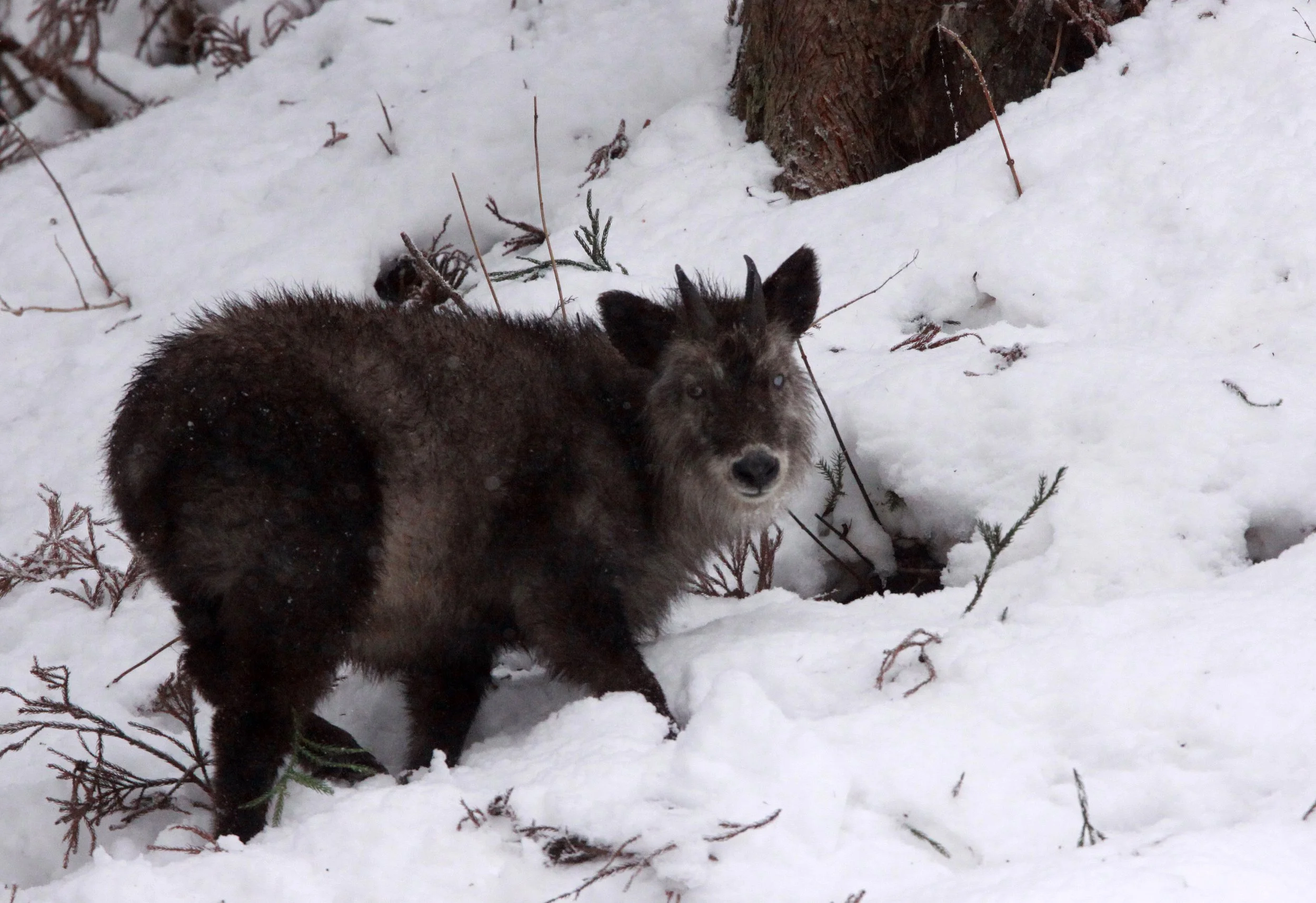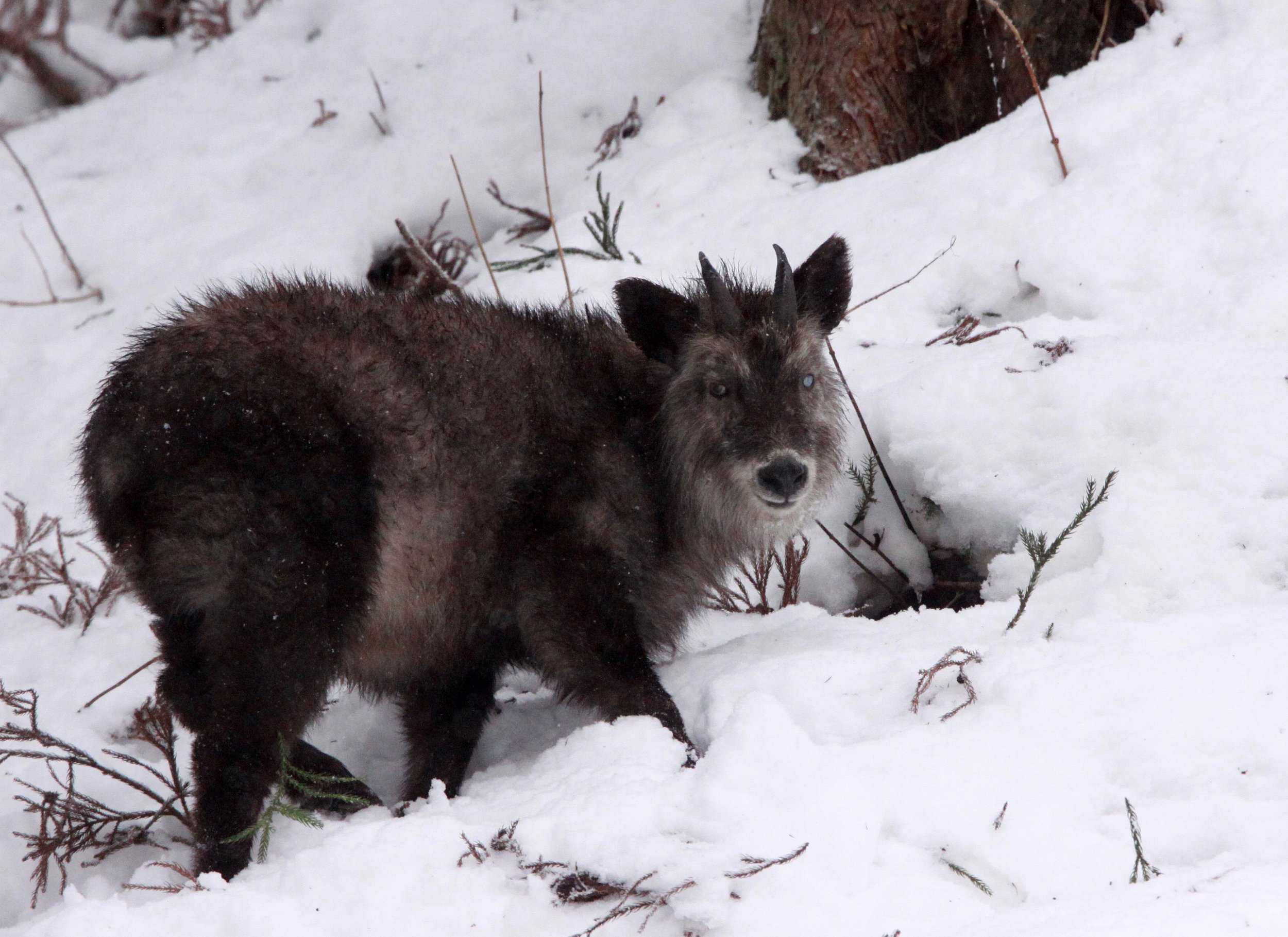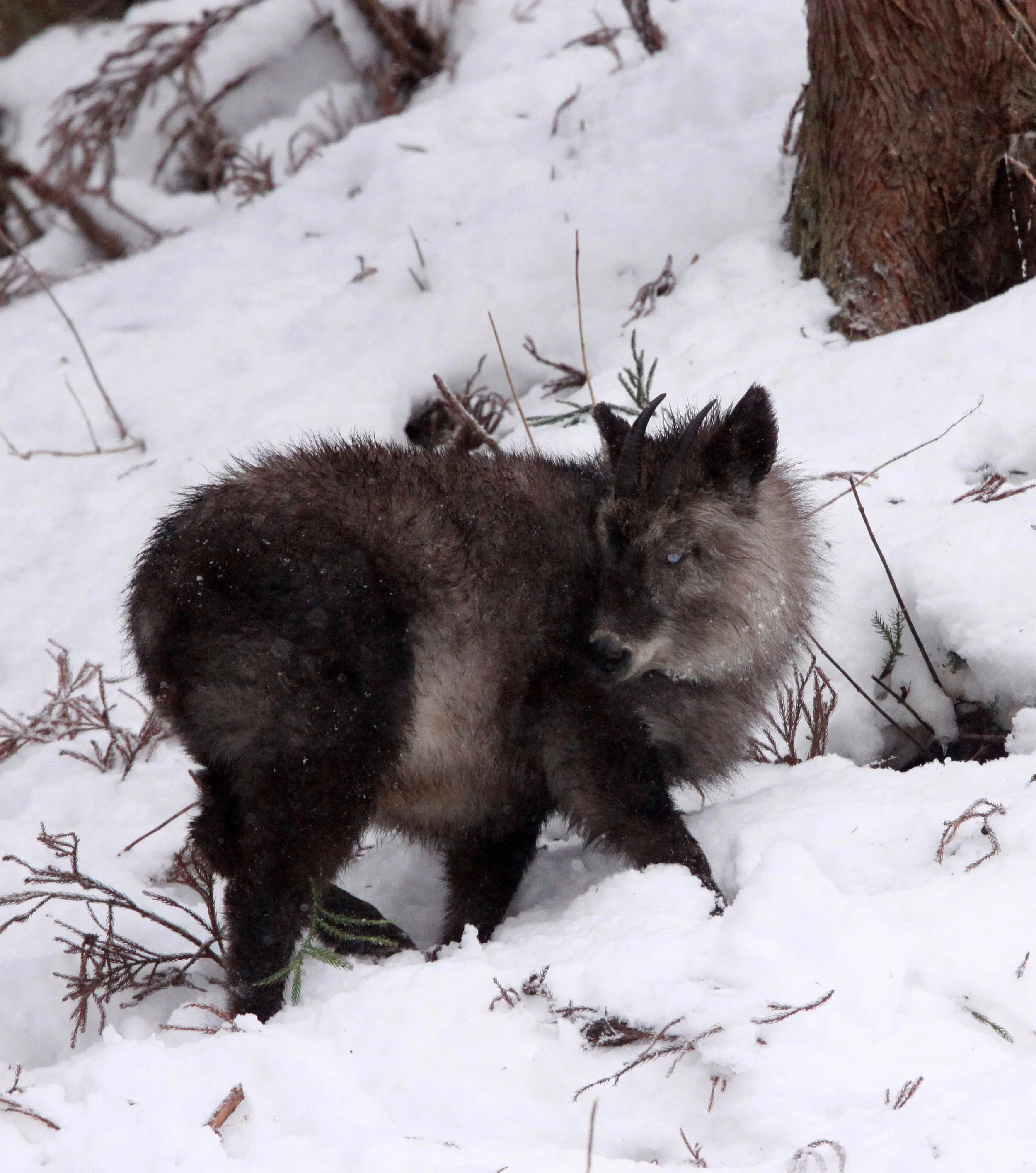
Capricornis, the Serow
Japanese & Indochinese Serow Galleries
The Indochinese serow (Capricornis sumatraensis maritimus) is a vulnerable goat-antelope, a subspecies of the mainland serow, native to Cambodia, Laos, Myanmar, Thailand and Vietnam. The Indochinese serow inhabits steep, rugged hills up to an elevation of 4,500 m (14,800 ft). It prefers rocky terrain but is also found in forests and flat areas. It is able to swim to small offshore islands. This species has a moderate level of tolerance to human disturbance, and could persist well in habitat fragments and secondary forests, though avoiding farmlands.
The distribution map for this species is from Thai National Parks Website and shows various locations where this species has definitely been spotted in Thailand. Little to no other distribution data appears to be readily available currently.





























































































































































































































The Japanese serow (氈鹿, kamoshika, lit. "coarse pelt deer"): (Capricornis crispus) (羚羊) is a Japanese goat-antelope, an even-toed ungulate mammal. It is found in dense woodland in Japan, primarily in northern and central Honshu. The serow is seen as a national symbol of Japan, and is subject to protection in conservation areas.
Adult Japanese serow stand about 81 centimetres (32 in) tall and weigh 30–45 kilograms (66–99 lb). They are black to whitish, and colouring lightens in summer. The fur is very bushy, especially the tail. Both sexes have short, backwards-curving horns, and are difficult to distinguish by sight. Japanese serow are found in dense mountain forests where they eat leaves, shoots, and acorns. They are diurnal and feed in early mornings and late afternoons. Serows are solitary, or gather in couples or small family groups. The animal marks its territory with sweet-and-sour-smelling preorbital gland secretions, and males and females have separate territories that may overlap.
In the mid-20th century, the Japanese serow was hunted to near-extinction. In 1955, the Japanese government passed a law designating it a "Special National Monument" to protect it from poachers. Populations have since grown so greatly that the IUCN Red List of Threatened Animals ranks it "least concern". Complaints from foresters and farmers led in 1979 to the 1955 law's repeal. Since then, the serow has had protected status in 13 designated protected areas over 23 prefectures, and has been subject to culling as a pest outside conservation areas. Conservationists have labelled it a "living national treasure of the forest". Athletes with superior agility and speed draw comparisons with the serow, and the Yamaha Motor Company has marketed the XT 225 and its successor XT 250 dual sport motorcycle as the Yamaha Serow.
Capricornis has sometimes been classified as Naemorhedus together with gorals (pictured: Naemorhedus caudatus or long-tailed goral).
There is no fossil record of the Japanese serow; its evolutionary history and the closeness of its relation to the Taiwan serow (Capricornis swinhoei) are speculative. Its taxonomic position has led to it being called a "living fossil". Karyotype studies indicate it was the earliest species to split from the common Capricornis ancestor. The closest relative to the Japanese serow is the Taiwan serow (Capricornis swinhoei). Genetically, there is little difference between Japanese and Taiwan serows; their karyotype is essentially the same: 2n=50, FN=60. The Taiwan serow is smaller and shorter-haired, with browner fur and a white patch under the chin and throat.
Phylogenetically, Capricornis is closer to goats and sheep than cattle. The nomenclature and status of Capricornis taxa are not completely resolved. Some researchers have considered Capricornis a junior synonym of Naemorhedus, a classification that includes gorals; molecular analysis has not supported this classification. Capricornis has a lower canine, which Naemorhedus species usually do not.
In Japan, the serow is widely thought of as a kind of deer, though deer and serows are in different families. In the past, the Japanese word kamoshika was written using the Chinese character for shika, meaning "deer". Today, when written using Chinese characters, the characters for "antelope" and "sheep" are used. Sometimes the serow is mistaken for a wild boar.
Japanese serow (Capricornis crispus) - Jigokudani Onsen, Nagano and Mutsu Japan


































































